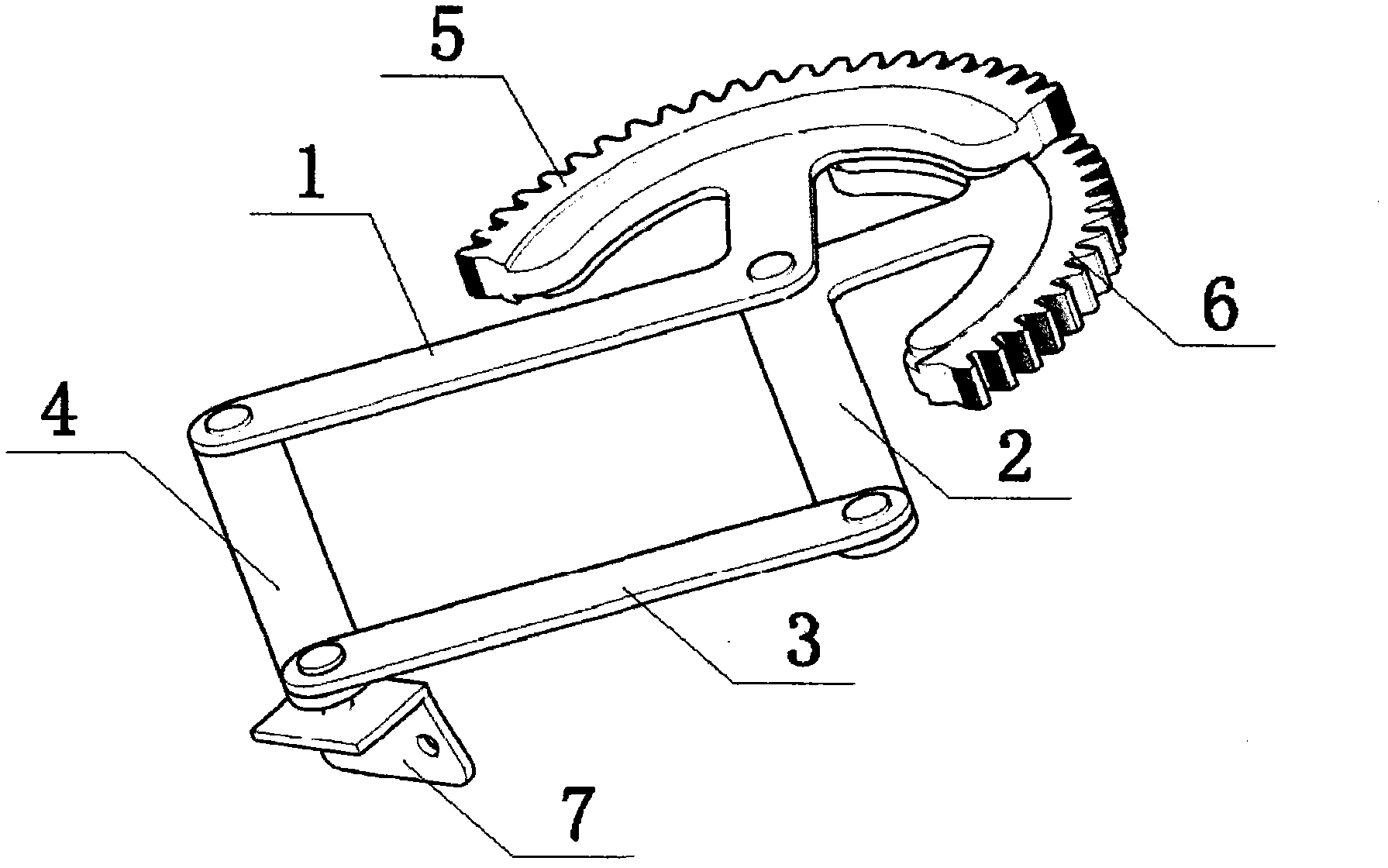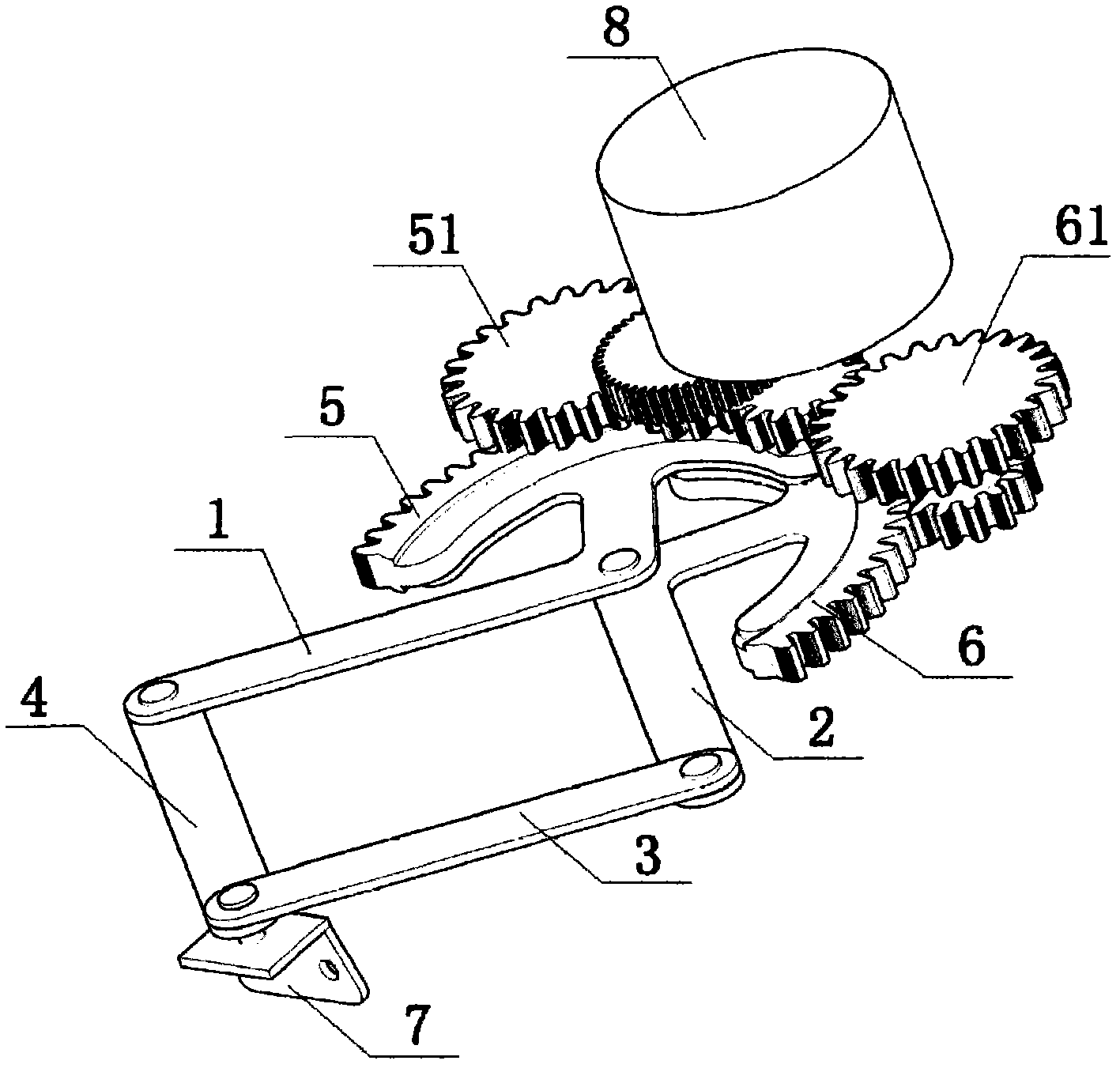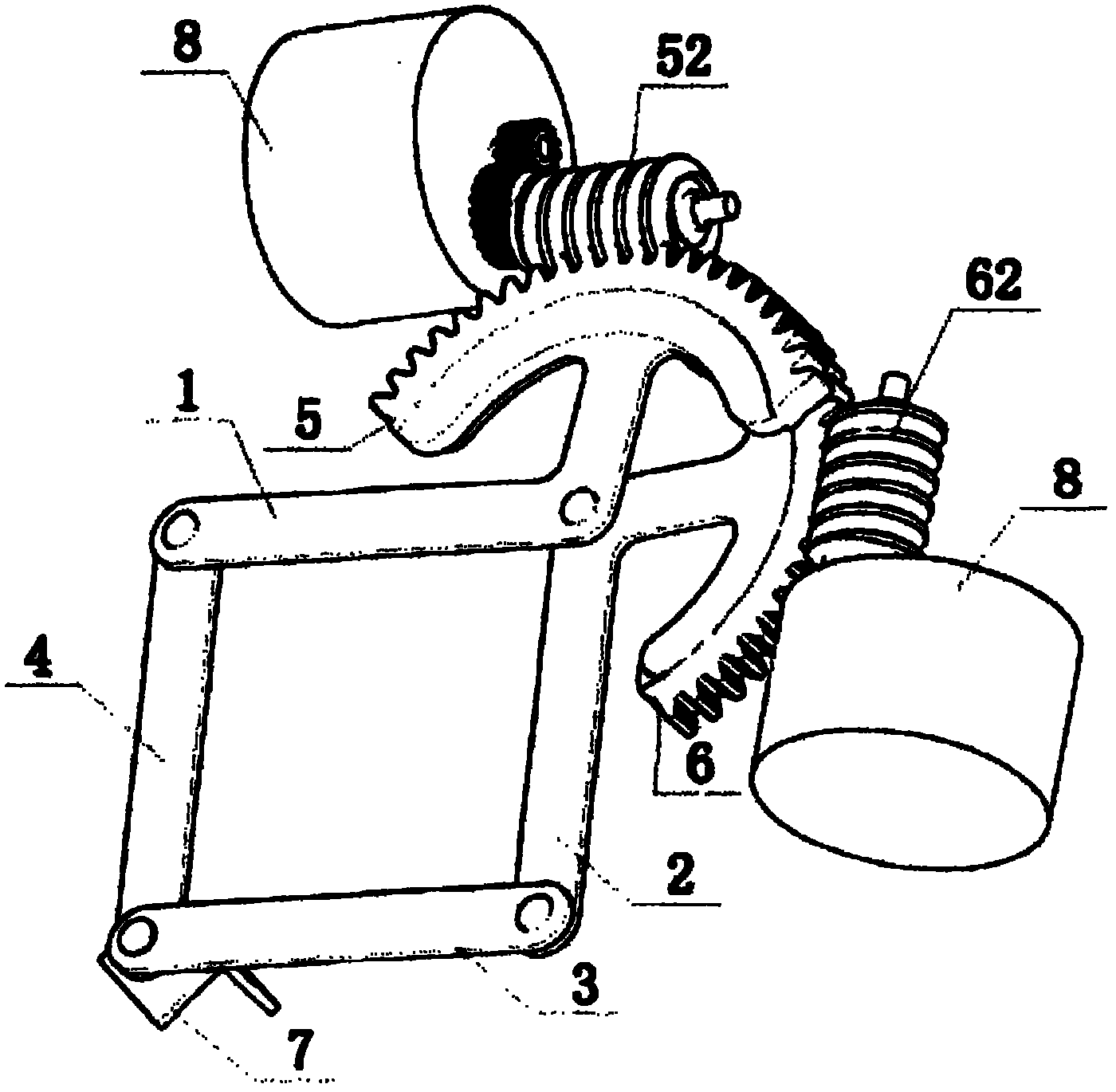Connecting-rod opening and closing mechanism used for casement doors and windows and suspended sash windows
A technology for opening and closing doors and windows, opening and closing mechanism, applied in the control mechanism of wing fan, door/window accessories, power control mechanism, etc. problem, to achieve the effect of stable opening and closing speed, fast opening and closing speed, and low noise
- Summary
- Abstract
- Description
- Claims
- Application Information
AI Technical Summary
Problems solved by technology
Method used
Image
Examples
specific Embodiment approach 1
[0023] Specific implementation mode one: refer to Figure 1-Figure 3 , the specific embodiment adopts the following technical scheme: it includes the first active link 1, the second active link 2, the first passive link 3, the second passive link 4, the first kinematic pair 5 and the second kinematic pair 6. The first active link 1, the second active link 2, the first passive link 3, and the second passive link 4 are hinged together end to end to form a strut, and the first kinematic pair 5 and the second kinematic pair 6 are respectively Installed on the extension section outside the hinge point of the first active link 1 and the second active link 2, the connecting piece 7 is located at the hinge point of the first passive link 3 and the second passive link 4, and is reliably connected with the window sash.
[0024] The first active link 1 , the second active link 2 , the first passive link 3 , and the second passive link 4 can be of the same length or not.
[0025] The fir...
specific Embodiment approach 2
[0033] Specific implementation mode two: refer to Figure 4 The difference between this embodiment and Embodiment 1 is that: after the first passive link 3 and the second passive link 4 extend out of the hinge point, they are connected with the first extension link 31 and the second extension link The rods 41 are hinged to form a composite hinge, and the connectors are installed on the hinge points of the first extension link 31 and the second extension link 41 . Other components and connections are the same as those in the first embodiment.
[0034] This specific implementation and specific implementation can increase the opening distance and reduce the opening and closing torque.
specific Embodiment approach 3
[0035] Specific implementation mode three: refer to Figure 5 The difference between this embodiment and the first embodiment is that an energy storage device 11 is installed between the hinge points of the connecting rods, and the other components and connections are the same as those of the first embodiment.
[0036] The energy storage device 11 is a tension spring.
[0037] The principle of this specific implementation is: when the sash 92 is closed, the energy storage device 11 is gradually stretched; when the sash 92 is completely closed, the energy storage device 11 is stretched to the maximum, and the potential energy also reaches the maximum; The energy storage device 11 shrinks, releases the stored potential energy and converts it into the thrust of the connecting rod, which greatly reduces the load when the motor is started. Such as Figure 5 The connection method shown is particularly effective when applied to top-hung windows, and is especially effective when app...
PUM
 Login to View More
Login to View More Abstract
Description
Claims
Application Information
 Login to View More
Login to View More - R&D
- Intellectual Property
- Life Sciences
- Materials
- Tech Scout
- Unparalleled Data Quality
- Higher Quality Content
- 60% Fewer Hallucinations
Browse by: Latest US Patents, China's latest patents, Technical Efficacy Thesaurus, Application Domain, Technology Topic, Popular Technical Reports.
© 2025 PatSnap. All rights reserved.Legal|Privacy policy|Modern Slavery Act Transparency Statement|Sitemap|About US| Contact US: help@patsnap.com



